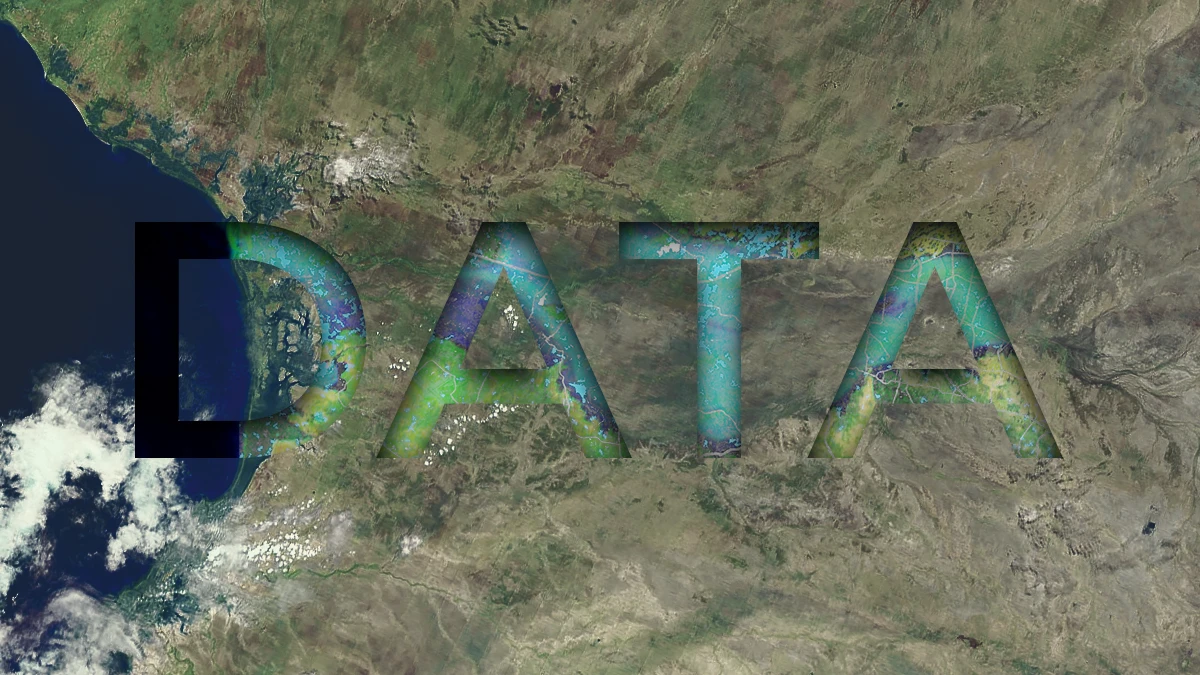(Re)in Summary
• Climate change is exacerbating the need for more accurate, localised data, but a lack of granular data in APAC hampers effective risk pricing.
• Issues include appetite for localised data, outdated IT systems, difficulty obtaining data, variability in quality, and reluctance to share loss data.
• Industry efforts vary, with some companies adopting advanced data practices, while others lag in data sophistication.
• Technological advancements like AI could present opportunities to improve data collection and risk assessment.
• High-quality data from countries like New Zealand and Japan contrasts with limited data from like China and India.
Ben Horton is despondent. The way he sees it, the world has less than 10 years to make serious progress reversing global warming or truly fall off the proverbial cliff. He finds it difficult to understand why governments and the private sector, especially the insurance industry, are not working harder to access or develop more granular data to inform products and how it handles risk.
“Fortunately, we’re still on time to reverse global warming but ask me again in five years. If we have got nowhere, then I probably wouldn’t take your call. I’d be more interested in trying to secure my family somewhere. That’s how serious it is,” says Horton.

Ben Horton
Director of the Earth Observatory of SingaporeA professor in Earth Science at the Asian School of the Environment in Nanyang Technological University (NTU) and the Director of the Earth Observatory of Singapore, Horton is eminently qualified to make this judgment.
“I never thought the climate emergency of record rainfall, heats, droughts, wildfires and sea level rise would happen so soon,” says Horton.
“The time window for action is rapidly closing,” Horton says. “If we don’t do anything on climate change… we’re going to live in an uninsurable world.”
“Addressing climate change will require many solutions—there’s no magic bullet. Yet nearly all of these solutions exist today. They range from where we source our electricity to protecting forests and mangroves from deforestation.” Horton says
A data problem
Pricing risk accurately is much harder without data that is granular enough to account for nuanced, local characteristics. Yet, Asia Pacific’s insurance industry can fall short of the data required to make effective decisions; more can be done to access or develop such data.
Despite the potential costs for insurance companies, Horton says he has never been approached by an insurance company to develop better models.
At one point, he says he went around to various insurers to discuss their models on coastal vulnerability risks and “got time with quite senior people,” but no one in the industry returned to explore opportunities for more granular models.
He also found that most models came from scientists in the U.S., who may be very good but also lack local nuance and knowledge.
“Good quality data is fundamental to expand insurance accessibility, Vineet Kumar, Swiss Re’s Head of Cat Perils in Asia Pacific tells (Re)in Asia.
“With data, (re)insurers can develop relevant products, cost it adequately, make them affordable, potentially enabling capacity in the markets so that we can look to reduce the protection gap in APAC, hence increasing societal resilience.”
The problem may be systemic across Southeast Asia. In India and China, for example, “the data is not collected at the point of sale as it is not historically used in risk pricing,” said Kumar.

Vineet Kumar
Head of APAC Cat Perils at Swiss ReSometimes, data is collected but not in a way that it can be used to price risk due to a variety of reasons, such as outdated legacy IT systems or even the use of paper forms that makes it hard to make the data usable.
“Quality of data across APAC is variable – ranging from more detailed information in more mature (nat-cat exposed) markets such as Japan, Taiwan and Australia to those in developing Asia,” said Alexander Pui, Adjunct Fellow at the Climate Change Research Center, UNSW, and Senior Vice President for Climate and Sustainability Advisory at Marsh.
“While I am seeing improvements in collection of exposure information such as detailed latitudes / longitudes and insured values of asset locations, there are still significant gaps when it comes to, say, terrain, climate hazard and claims data, which is critical for helping to develop views of risk through loss experience ratings and catastrophe models.”

Alexander Pui
Senior VP for Climate and Sustainability Advisory at MarshWhile there may be different reasons behind why data is or isn’t available, Pui suggests one driver of deficiencies may be a “perception that revealing more detail around loss pathways could lead to higher insurance rates” or buyers being unfairly penalised.
“It has always puzzled me as to why the wholesale commercial market only expects 3 (or if generous 5 year) loss histories, especially when natural catastrophes are inherently infrequent but severe events,” says Pui.
“In other cases, particularly around data used for model development, it can be challenging to obtain, say, flood defense levee information and accurate data around risk management policies measures undertaken at a more macro level.”
In the age of artificial intelligence (AI), he believes the main obstacle to a more data-focused approach to risk pricing is “actors across the stakeholder spectrum – underwriters, brokers and insurance managers.” The data and AI revolution compels the industry to be more technical risk focused and presents an opportunity to upskill talent within the insurance value chain to optimize data and tools.
This challenge is particularly significant for flood risks because there may be different levels of authorities operating at different levels of water resource management.
Alexander Pui
Senior VP for Climate and Sustainability Advisory at MarshClimate change is making this lack of access to data a more immediate challenge because it is changing the fundamentals of the risk models that underpin the industry.
This is particularly true in Asia, where the quality and granularity of available data varies enormously. While New Zealand, Australia and Japan make plenty of data available, places like China are less willing to share openly. Other countries may simply not have enough data.
A case in point is access to data on coastal erosion in many places of Southeast Asia, which may not even exist. What this means is that providers who cover real estate in those areas may not know the level of risk they are insuring, the likelihood of a floor or even the cost of repairs or replacement.
“In the future, rates of coastal erosion will increase and the risk these areas are going to be flooded is going to be so much worse. Property that has a probability of being flooded once in a hundred years will have odds drastically shortened,” says Horton.
Ben Horton
Director of the Earth Observatory of SingaporeBigger claims
Another difficulty is that the (re)insurance industry price risk is based on a wide range of data, not just environmental but also economic and social data.
For instance, the industry uses economic data to gauge the impact of inflation and price policies.

Jay Guin
Executive Vice President and Chief Research Officer at Verisk“If policies are not priced properly and claims are being paid with high inflation, then that creates pressure on underwriting results,” says Jay Guin, Executive Vice President and Chief Research Officer at Verisk, a data analytics and risk modeler.
“With high inflation, the long tail lines, like liability lines, casualty lines, have long periods of payout and losses accumulate over time. Inflation creates challenges for those lines of business,” says Guin. “Then comes climate change and weather extremes… 2023 was, globally, one of the most catastrophic from a climate point of view.”
Anything related to the hydrological cycle is becoming more expensive to deal with, says Guin. Extreme rainfall is more common as are flash flooding events. Insurance providers need accurate, localised and up-to-date data to more fully understand how risks like rising sea levels will impact them.
Unfortunately, such data is not always available. For instance, data on elevation levels is generally available in the U.S. or Europe but the same cannot be said for many places in Asia where in certain countries the data is a national secret.
Unfortunately, “the rarer events like extreme typhoons or extreme hurricanes, they’re also getting worse,” says Guin.
All this translates into bigger claims payouts.
There are things the industry can do to protect itself, such as raising premiums in expectation of larger future payouts, but this approach may not be sustainable “given the frequency and increasingly serious nature of environmentally destructive events, this would lead to continuously increasing premiums,” noted Skadden, a global law firm, in a December 2023 note.
A better approach is to truly understand risks and develop or price products accordingly.
In April 2024 Verisk released Next Generation Models (NGM) that are the “culmination of many years of research” and are “informed by data” from a set of global catastrophes.
“We have taken our entire suite of 100+ models and upgraded the financial component all at once,” says Guin, noting that the process took years.
The reality of data
Another hurdle to developing better models is that accessing data related to climate change or the impact of increasingly frequent and more intense NatCat events is that both are relatively new phenomena.
“I’m seeing the progression, but it’s not uniform. When I started my career, having location level claims data was almost an impossibility. At best, we could see losses aggregated at the zip code level or county level in the United States,” Guin says.
“When the modeling industry started, over 30 years ago, data was scarce,” Guin says. “Fast forward to today and there is an abundance of data. And think about how much data we are observing through satellites, how much data we are observing through our collecting through sensors, how much data of actual claims that the insurance industry is paying.”
In some places, the progress has been enormous. After earthquakes in 2011, both New Zealand and Japan produced very high-quality data that allowed the industry to better prepare for future events.
“But we don’t see that kind of data, let’s say from the many typhoons that impact China every year. At best, we might see some very aggregated information,” says Guin. In China, some of this may be explained by sensitivity around what kind of data is allowed to leave the country. In other places, like India, the reasons may be different.
Jay Guin
Executive Vice President and Chief Research Officer at VeriskEven in those places where there are some green shoots of better-quality data emerging, insurers still have to use the data they do have effectively. And here, again, there are significant variations.
“I don’t think we can paint it with a broad brush that (insurance companies) are not doing it. They are to varying degrees. Some companies are very progressive, very strong from an analytical point of view, and they are always forward looking,” Guin says. But “some are probably not as sophisticated.”














